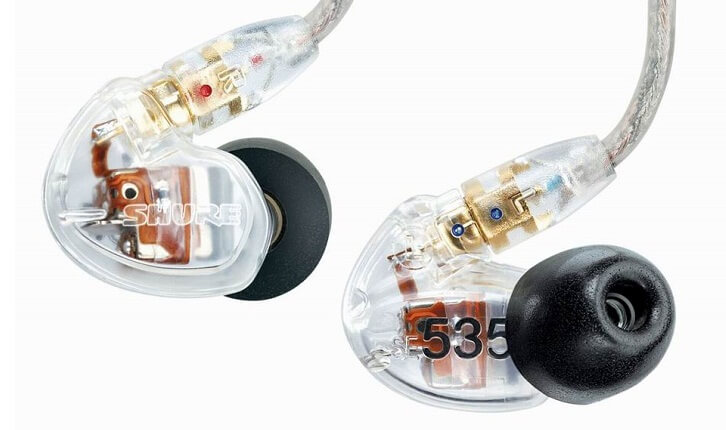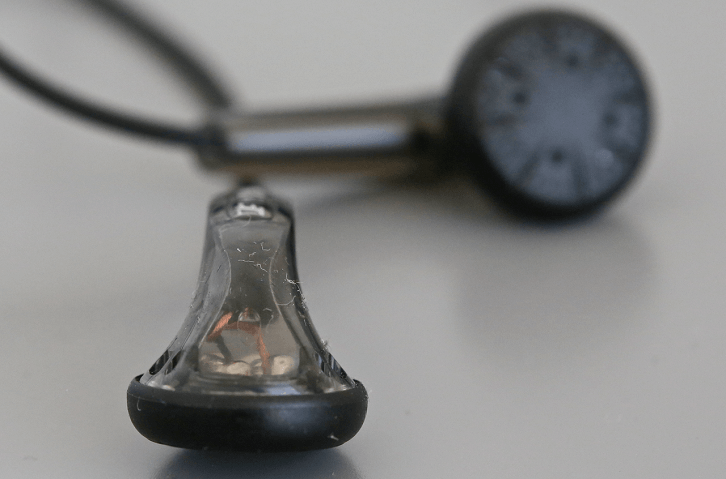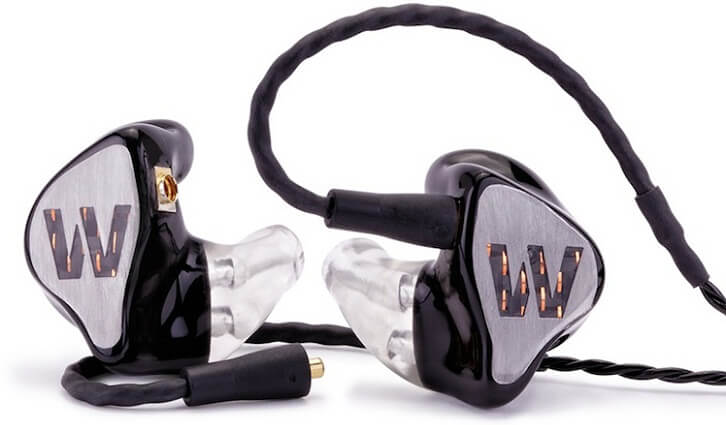What is Soft Clipping
Discover the art of soft clipping in audio production: uncovering the balance between clarity and character.
With the increase in personal audio listening equipment, different terms are used to describe the various technologies employed. Headphones, In-ear monitors, earbuds, earphones, etc. might all appear to mean the same thing. However, the technology, style, and design of all these audio equipment are different from each other. But, what are the differences between them and why would you, as a user, pick an In-Ear monitor over an earbud or vice versa? Which is the best between the two? Continue reading below to have a better understanding.
In-Ear Monitors (IEMs for short) are also called in-ear headphones, earphones. In-Ear monitors are a professional grade of earbuds in the consumer audio market. IEMs are a piece of personal audio listening equipment that sits within the structure of the ear to provide a user with immersive and great listening experience.

Shure SE535 In-Ear Monitor
Unlike over-ear or on ear-headphones which seal off the entire ear, In-Ear monitors create a seal by a protrusion part in the earphone that extends into the ear canal. The part that extends into the ear is typically fitted with foam or silicone ear tips for comfort, keeping the earphone in place, and blocking out noise.
See our best in-ear monitors or its companion article for the best budget IEMs.
Earbuds are similar in size to In-Ear monitors; however, instead of going into the ear canal, they sit on the outer structure of the ears. Because they are prone to falling off, some earbud models come with “wings” which offer them extra support.

VE MONK Plus Earbuds
Unlike IEMs, earbuds create a partial seal with the ears. Because of this, earbuds allow in ambient noise; thus, they are less than ideal for immersive or critical listening. However, if you like extra awareness when working out, earbuds are a great option yo use when jogging or working out.
Custom In-Ear monitors, or CIEMs. As the name suggests are IEMs that are custom designed to an owner’s ear. A custom fitting earphone eliminates the need for ear tips and allows the earphone to better sit in the ear for better sound quality, improved comfort, and better noise isolation.

Westone Elite Series ES60 Custom In-Ear Monitors
CIEMs are made by filling the ear with a special liquid that hardens after a short time, thereby forming an impression of your ear. The impressions created are then used to craft your custom In-Ear monitors. The cost involved in making CIEMs is sometimes quite high, which makes them unpopular with many people. However, as if you are a DIY lover, you can try and make your CIEMs. Just make sure to seek an audiologist to create your custom impressions professionally because making them yourself might cause injury or deafness.
Check out our list of CIEMs makers.
Just like open headphones and closed headphones have their advantages and disadvantages, so do “open earphones” (ie, earbuds) and “closed earphones” (In-Ear monitors). There are many essential factors that you should consider before making up your mind to get your new piece of personal audio listening equipment.
Talking about comfort with in-ear headphones is a gray area. For some people having IEMs or CIEMs sticking up the ear canal is quite uncomfortable. However, though earbuds don’t go into the ear canal, they too cause numbness and become quite uncomfortable after a short period of use. So, which is a comfortable fit?
IEMs, unlike CIEMs, come in different designs and styles. However, though they differ is designs finding one that fits you perfectly without irritating after a couple of hours, after use is quite easy. I find the Shure SE535 to sit perfectly in my ears without causing much discomfort even after long hours of use. IEMs also come with different ear tips of various sizes to choose from, which help in increasing comfort.
For people who can’t stand canalphones/IEMs, Earbuds will present the best solution comfort-wise. Instead of going deep into the ear canal, earbuds sit near the outer ear. However, for people with small ears, the wide earbud housing’s might get uncomfortable after some time. If you want to know the best earbuds for small ears, we have an article for that.
If you have ever tried a custom In-Ear monitor (CIEM), then you know the difference between their comfort levels compared to earbuds or IEMs is insane. However, getting a comfortable fit highly depends on the skills of your chosen audiologist to take your ear impressions. A CIEM that fits well in your ears can be worn for many hours without causing any pain or irritation.
The amount of sound that enters your ears is largely determined by the seal created when an in-ear headphone is placed into the ear.
IEMs are useful if you need as much ambient noise isolation as possible. The design of IEMs makes them quite good at blocking out external noise from entering the ear. This makes them best to use in hectic places like noisy restaurants, bars, or bus stations. To maximize sound isolation properties in IEMs, select ear tips that fit well into your ear canal.
Earbuds or open-phones are terrible when it comes to noise isolation. However, this can be an advantage or disadvantage, depending on where you stand. As an advantage, if you would like to be aware of the environment you are in, earbuds are a great option. However, for critical music listening earbuds will not do unless you are in a quiet environment.
CIEMs are the winner when it comes to sound isolation. Because they are custom made to fit an individual’s ear, they tend to block out pretty much all external noise. CIEMs, because of their great sound isolation abilities are preferred by musicians or singers on stage (referred to as stage monitors) to eliminate stage volume and deliver a clear mix to an artist’s ears.
A lot of factors contribute to the sound quality of IEMs, earbuds, and CIEMs. While there are better sounding earbuds in the market, generally the sound associated with earbuds is considered inferior when taking IEM’s and CIEM’s sound into the mix.
Earbuds have a harder challenge in producing high-quality sound because they do not fully seal and sound is not being focused into the ear canal. However, I have listened and heard crappy sounding earbuds and, IEMs at various price-points; if they are bad sounding, you cannot do something about them. This is not to say they’re no good sounding earbuds – the VE MONK Plus and the Edifier H180 are both cheap earbuds that sound great.
Apart from providing a good seal, IEMs and CIEMs have a greater potential for quality audio by having more than two headphone drivers. High-end IEMs and CIEMs boast as many as eight drivers into a single earpiece. By having, for example, two drivers, one driver can reproduce low frequencies while the other focuses on high frequencies. An IEM/CIEM with more drivers can have each driver dedicated to producing low, middle, and high frequencies, thereby delivering deep bass with better clarity, low distortion, and resonance the across frequency spectrum.
If you work in an office or you are in other environments that require you to have some amount of awareness of your situation, earbuds can be ideal. Because earbuds rest on the outer ear without sealing them completely, ambient noise will enter the ears.
IEMs come with different sized ear tips. Using the right sized ear tips fits them snugly into the ears providing a seal that keeps out ambient noise. This makes them less than ideal for situation awareness compared to earbuds.
CIEMs provide a custom fit in an individual’s ears. They provide a tight seal and isolate as much noise as possible from your environment. For situation awareness, CIEMs are the worst, and it would be better to go for earbuds.
If you are looking to make a fashion appeal or need a cool looking set of in-ear headphones, then CIEMs are the way to go. CIEMs are rewarding because they are customized both aesthetically and by fit for you. Do you have any exciting designs? With CIEMs, you can get your custom designs on your earpieces – this will, however, need you to dig a little deeper into your pockets.
With IEMs, you do not get to pick your design. However, with the number of great looking IEMs in the market, it is hard not to find one you can choose. IEMs from companies like Noble Audio, Campfire Audio, or iBasso are gorgeous and incorporate great designs and styles.
Earbuds are cheaper. If the cost of IEMs and CIEMs is too high. Then earbuds are your last resort. Though their designs have remained unchanged, they still work as advertised and come at lower prices. While they might not have a flashy look, with earbuds, you do not have to worry about losing them or replacing a pair now and then.
With sporting, whether you pick earbuds, IEMs or CIEMs will depend on the task at hand or your preferred working out environment.
If you are working out in busy places where you need to be attentive, earbuds are the best option. However, if you need an earpiece that does not fall off, CIEMs and IEMs are the best bet. Of course, with IEMs and CIEMs, you will have to sacrifice situation awareness and also pay more.
Choosing between IEMs, earbuds, or CIEMs remains your decision to make. We have documented above with more details the differences between In-Ear monitors and earbuds and CIEMs. Which fits your preferences and why? Comment below with your reason or questions, and we will be glad to help.